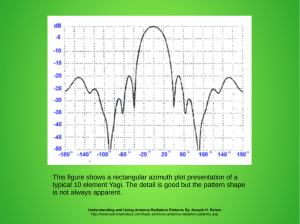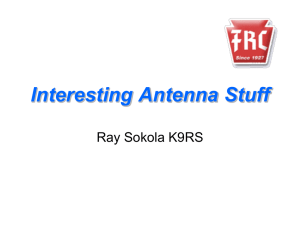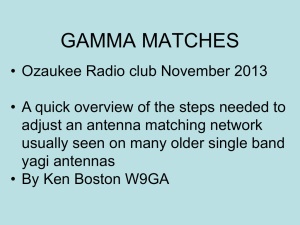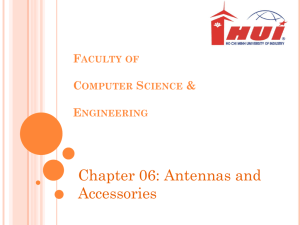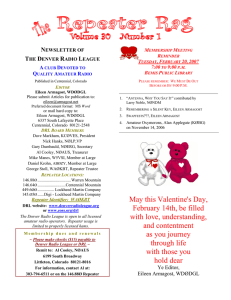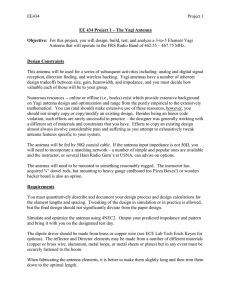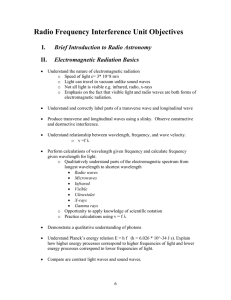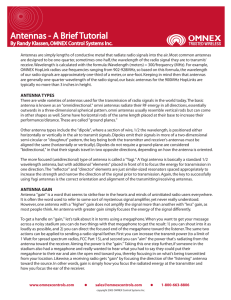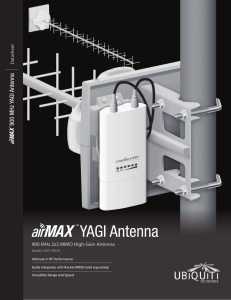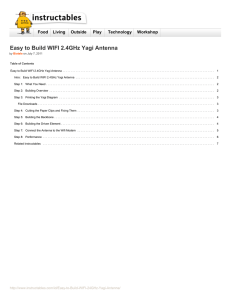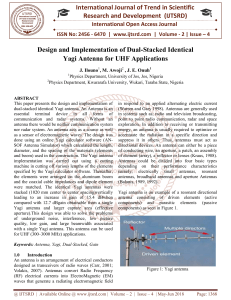EE434 Yagi Antenna Design Example Spring 2016
advertisement
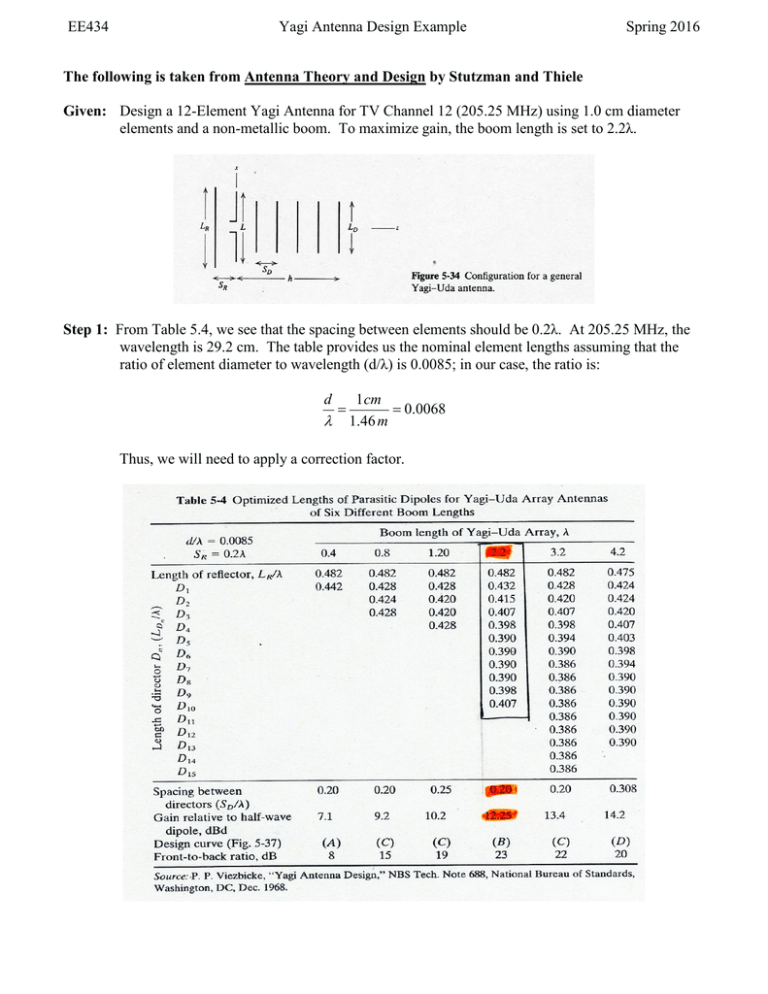
EE434 Yagi Antenna Design Example Spring 2016 The following is taken from Antenna Theory and Design by Stutzman and Thiele Given: Design a 12-Element Yagi Antenna for TV Channel 12 (205.25 MHz) using 1.0 cm diameter elements and a non-metallic boom. To maximize gain, the boom length is set to 2.2λ. Step 1: From Table 5.4, we see that the spacing between elements should be 0.2λ. At 205.25 MHz, the wavelength is 29.2 cm. The table provides us the nominal element lengths assuming that the ratio of element diameter to wavelength (d/λ) is 0.0085; in our case, the ratio is: d = λ 1 cm = 0.0068 1.46 m Thus, we will need to apply a correction factor. EE434 Yagi Antenna Design Example Spring 2016 Step 2: Because the d/λ ratio is low, we need to increase the element lengths slightly. To determine the increase, we compute the intersection of the actual d/λ = 0.0068 on the design curve B on Figure 5.37. This intersection gives us the compensated lengths of the reflector and first director: = = λ 0.792m LR 0.483 = = λ 0.639m LD1 0.4375 Step 3: To compute the length adjustment to the other directors, we need calculate the amount of increase between the 0.0065 and nominal 0.0085 points for D1 – in this case the element increased by: D = LD 0.4375λ − 0.432 = λ 0.0055λ EE434 Yagi Antenna Design Example Spring 2016 Thus, we need to increase the lengths of all remaining drivers by an identical amount: LD2 0.421 = = λ 0.615m LD LD = = = λ 0.604m 0.414 3 10 LD LD = = = λ 0.591m 0.405 4 9 LD LD LD LD = = = = = λ 0.581m 0.398 5 6 7 8 With some minor tweaking, the resulting pattern is: The computed input impedance (again, after some tweaking) is Z in =49.1 + j17.6Ω . Note that both of these differ significantly from what Stutzman claims, illustrating the art (and not just science) component of antenna design.
